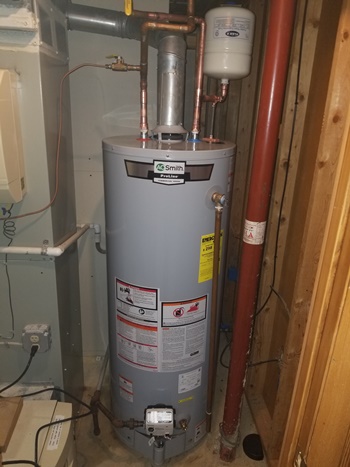How to Prolong the Lifespan of Your Home's Hot Water System Through Maintenance
How to Prolong the Lifespan of Your Home's Hot Water System Through Maintenance
Blog Article
In this article on the next paragraphs you will discover some brilliant data regarding Tips on Maintaining a Water Heater.

Hot water is crucial for day-to-day convenience, whether it's for a rejuvenating shower or washing recipes. To guarantee your hot water system runs successfully and lasts much longer, routine maintenance is vital. This post offers practical pointers and understandings on how to maintain your home's warm water system to avoid disturbances and expensive repair work.
Intro
Preserving your home's hot water system could seem daunting, yet with a few straightforward steps, you can guarantee it runs smoothly for several years to come. This overview covers everything from recognizing your hot water system to do it yourself maintenance pointers and understanding when to call in expert aid.
Value of Maintaining Your Warm Water System
Regular maintenance not just extends the life-span of your hot water system however additionally guarantees it operates successfully. Ignoring maintenance can lead to lowered effectiveness, higher power bills, and even early failure of the system.
Indications Your Hot Water System Needs Maintenance
Recognizing when your hot water system needs focus can protect against major problems. Keep an eye out for signs such as inconsistent water temperature level, weird noises from the heating unit, or corroded water.
Understanding Your Warm Water System
Prior to diving into maintenance tasks, it's practical to understand the fundamental parts of your warm water system. Usually, this consists of the water heater itself, pipelines, anode rods, and temperature level controls.
Regular Monthly Upkeep Tasks
Regular regular monthly checks can aid catch minor issues prior to they escalate.
Flushing the Water Heater
Flushing your water heater eliminates sediment buildup, enhancing effectiveness and extending its life.
Monitoring and Changing Anode Rods
Anode poles protect against rust inside the storage tank. Checking and changing them when broken is crucial.
Inspecting and Adjusting Temperature Setups
Readjusting the temperature level setups makes certain ideal efficiency and safety and security.
DIY Tips for Upkeep
You can do a number of upkeep tasks yourself to keep your hot water system in top condition.
Checking for Leaks
Regularly inspect pipes and links for leakages, as these can lead to water damages and greater expenses.
Checking Pressure Relief Valves
Testing the pressure relief valve guarantees it operates properly and avoids excessive pressure build-up.
Shielding Pipelines
Protecting hot water pipes lowers warm loss and can save energy.
When to Call a Professional
While DIY upkeep is valuable, some concerns call for professional experience.
Complicated Problems Requiring Specialist Assistance
Instances include significant leakages, electric issues, or if your water heater is continually underperforming.
Regular Professional Maintenance Benefits
Professional maintenance can consist of complete assessments, tune-ups, and guaranteeing conformity with safety criteria.
Final thought
Regular maintenance of your home's hot water system is essential for efficiency, longevity, and expense savings. By adhering to these suggestions and recognizing when to seek specialist assistance, you can guarantee a reliable supply of warm water without unexpected interruptions.
How to Maintain an Instant Hot Water Heater
Before tinkering with your hot water heater, make sure that it’s not powered on. You also have to turn off the main circuit breaker and shut off the main gas line to prevent accidents. Also turn off the water valves connected to your unit to prevent water from flowing into and out of the appliance. 2. When you’re done, you have to detach the purge valves’ caps. These look like the letter “T†and are situated on either side of the water valves. Doing so will release any pressure that has accumulated inside the valves while at the same time avoid hot water from shooting out and burning your skin. 3. When the purge valves’ caps are removed, you have to connect your hosing lines to the valves. Your unit should have come with three hoses but if it didn’t, you can purchase these things from any hardware or home repair shops. You can also get them from retail stores that sell water heating systems. Read the user’s manual and follow it to complete this task properly. When the hosing lines are connected, open the purge port’s valves. 4. You should never use harsh chemical cleaners or solutions when cleaning your unit. Make use of white vinegar instead. It should be undiluted and you’ll probably use about 2 gallons. 5. Now flush your water heater. This task should probably take about 40 minutes. We can’t give you specific directions for this because the procedure is carried out depending on the type, model and brand of your heater. With that being said, refer to the user’s manual. 6. When you’re done draining the unit, you have to turn off the purge port valves again. Remove the hosing lines that you earlier installed on each of the water valves. Put the valve caps (purge port) back in their respective places and be very careful so as not to damage the rubber discs that are found inside these caps. 7. Now that everything’s back in place, check your user’s manual again to find out how to reactivate your water heating system. 8. Once it is working, turn one of your hot water faucets on just to let air pass through the heater’s water supply pipes. Leave the tap on until water flows smoothly out of it. https://www.orrplumbing.com/blog/2014/september/how-to-maintain-an-instant-hot-water-heater/

As a serious person who reads about What Kind of Maintenance Do Water Heaters Need?, I thought sharing that section was a good thing. Be sure to take a moment to distribute this post if you enjoyed reading it. Thank you so much for taking the time to read it.
Book Now! Report this page